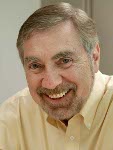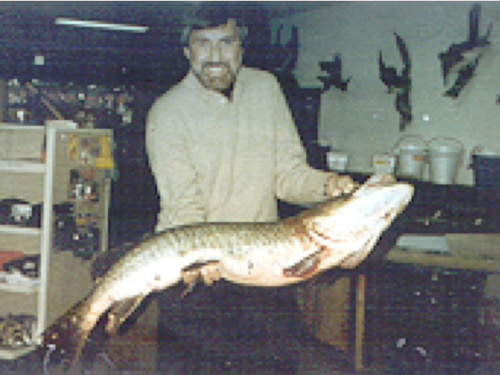Chuck Mistretta
Professor
“It really helps to look back and say ‘I did my best and I helped make the world a little better place’. As medical physicists we have an excellent chance of making this come true.”
Family?
There is no question that for me, family has and always will come first. I would not have been able to accomplish half of what I have without my wife Darlene taking care of all the issues that are most important in my life. She has been my best friend for 63 years since the first day I met her in fifth grade when I announced to the classmate sitting next to me that ‘I am going to marry that girl in the first row’. There is perhaps one thought I would share with anyone engaged in personal relationships as we all are. Try to make your friends, spouse and family members happy, putting your own agenda second to theirs. Ultimately they will recognize and appreciate this and do the same for you. Everyone wins.
What book is on your nightstand?
Dave Pelz – “The Short Game Bible”
Hobbies/downtime activities?
My hobbies are fishing, golf and music (I played the alto sax and butcher the piano, but I have the world’s best iPod playlist!)
Mistretta with a world-record-setting 46-inch musky caught in Lake Mendota
What other career could you see yourself in?
I would enjoy being a pro golfer. However, there does not seem to have been enough talent given to me for that task.
If I had a $1,000,000 research grant, I would…
Well, I guess I do! Present funds will be spent pursuing 4D DSA and 4D Fluoroscopy.
In the Spotlight
Charles A. Mistretta (Chuck), Ph.D, is a brilliant and prolific investigator who has transformed medical imaging and human health throughout his career, with groundbreaking contributions at multiple times and in multiple subfields. The influence of Dr Mistretta will be felt for years beyond his retirement, as he has enthusiastically and unselfishly shared his knowledge, ideas, and research style with the dozens of exceptional researchers he has mentored. In this spotlight, Chuck shared his vision for medical physics, his current projects, and the challenges students have to face in their future career.
What led you to the field of Medical Physics?
In 1968 I finished an electron/proton scattering experimental thesis in high energy physics at Harvard. I came to Wisconsin because it was my favorite state based on childhood fishing experiences. I worked as a high energy post doc for three years in the department of Physics. During that time I taught the large undergraduate introductory physics course (500 students per lecture, two lectures in a row, 16 TA’s). At the end of my three years, there was not a faculty position in high energy physics available for me so I began looking elsewhere. When my students heard that I was leaving the university several hundred of them marched on the dean’s office demanding that he find a way to keep me here (60’s students had a lot of causes in these days). He agreed to create an assistant professor position with the understanding that I would continue helping with the physics teaching but do research in Radiology. This was facilitated by John Cameron who had asked me if I was interested in medical imaging. I asked him what that was. He replied, “Its X-ray/people scattering”. I said “I think I know how to do that”. And so my medical imaging career began.
What is your current project?
My current project in 4D DSA completes a circle of angiographic development that began with the introduction of DSA in the late 1970’s, continued through many years of development in magnetic resonance angiography and eventually circled back to DSA where we now provide time resolved 3D volumes rather than just time resolved 2D images. The MRA and 4DDSA developments are based on undersampled acquisition and constrained reconstruction. These principles were developed in the magnetic resonance angiography context and later extended to the X-ray case. It is a good example of why a young medical physicist should be aware of the imaging principles involved in more than one modality. There is often significant opportunity for crosstalk.
We hope that the new 4D DSA and 4D Fluoroscopy techniques will result in increased opportunity for less invasive diagnosis and for safer X-ray interventional procedures requiring less contrast and X-ray dose.
What’s the best advice you’ve ever received? What advice would you give to students?
One important bit of wisdom provided by John Cameron was not to fret about problems that might in time go away. I have found that many worrisome things do resolve if given time.
One thing I always tell my students is that when they decide they are going to try to develop an improved imaging method, they should not think about incremental improvements to existing systems, Instead they should think about how they would do things if they could start all over again. In other words, do not be constrained by the limitations of accepted imaging methods.
Choose a career and position that you enjoy and that you are eager to go to every day. Pick a career that makes a difference in the world and hopefully helps people. When you get old some day and start becoming aware of your mortality, it really helps to look back and say “I did my best and I helped make the world a little better place”. As medical physicists we have an excellent chance of making this come true.
What are the challenges of working in Medical Physics? What can students learn from these challenges?
For a young medical physicist seeking to do research it is important to find an institution with a critical mass of colleagues who can help with defining projects, sharing infrastructure and seeking funding. At the University of Wisconsin I have enjoyed excellent collaboration, not only with my physics colleagues but from radiologists as well.
Funding for research has become an increasingly difficult challenge. Many young physicists may have to begin working on projects of established investigators and then look for ways to begin supporting their own independent research.
What do you think is the future of MRI and Medical Physics as a whole?
Yogi Berra said “predictions are hard to make-especially about the future”. I recall telling Willi Kalender in 1988 that CT was dead and that he should follow me into MRI. He subsequently was nominated for the Nobel Prize for the development of Spiral CT. I do recall that my mother nominated me for the Nobel Prize, but I only got the first part-NO!
Seriously, I think the future of Medical Physics is bright. There are constant developments on the imaging side and these developments are being increasingly incorporated in radiotherapy. I see plenty of opportunity and would strongly encourage young people to enter our profession.

